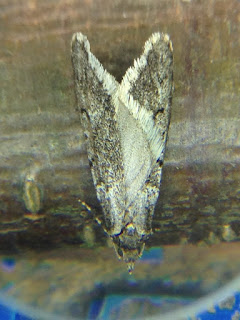 |
| Lapland Bunting: Blakeney Freshmarsh |
 |
| Flyby brent geese at Titchwell |
Setting out at 6, I picked up Gary in Egmere at 8 and we headed to Kelling Heath. We popped into Blakeney to see if the lapland buntings were about, but not being sure where they were and, having asked several other birders and still not knowing, we went to Kelling. A walk to the other side of the level crossing for woodlark and dartford warbler drew a blank. Common buzzards, tits and finches were all that were about. The also hoped for singing chiffchaff or willow warbler failed to materialise, too.
Off to Weybourne beach car park and Muckleborough Hill, but nothing here either: no stonechat or wheatear so after a quick sea check we moved on to Kelling Water Meadows. At last: birds!
On the water were a family of recently hatched egyptian geese, redshank, common and black headed gulls, 2 avocets and plenty of teal. Overhead, starlings, skylarks, linnets and chaffinches whilst a goldcrest was heard in the hedgerow.
 |
| Male linnet: Kelling Water Meadows |
 |
| World's worst Dartford Warbler shot!! |
 |
| red crested pochard |
 |
| smart BHG |
 |
| westerly curlew |
Several stonechat were knocking about as usual before we encountered a darker bird in the Alexanders: Just showing a hint of dark red breast with a grey head. A dartford warbler, a first for me at this site. Half an hour of following it, losing it and refinding but still not a chance of a photo, even though it showed well, if only for a few seconds.
A whimbrel flew in and landed on the far side of the water meadow. Second year lister in a few minutes so things were looking better. Wrens and more stonechat and finches as we walked back to the car, ready for a coffee at Cley Visitors' Centre. The reserve here was both busy with people and empty of birds, so, after pies at the Picnic Fayre, we headed to Lady Anne's Drive. The clear blue sky and warm temperatures meant it was packed solid here. A check for geese at the layby drew a blank so off along the A149 to see if the red necked grebe was still at Burnham Overy Staithe. Tide was out so, no, it wasn't. Godwits, turnstone, grey plover made the list before a trip up Chalk Pit Lane and around to Choseley drying barns. More common buzzards, dozens of red legged and English partridge as well as numerous hares. Yellowhammers at the barns but little else so down the hill and into a very busy Titchwell Reserve.
 |
| Avocets on the Freshmarsh |
 |
| Oystercatcher heading west |
 |
| distant group of common scoter and gulls |
 |
| Black tailed godwit coming into breeding plumage |
 |
| teal sifting through the mud. |
Several pochard and a pair of red crested pochard were noted as we approached the island hide, but plenty of water meant no waders on mud so we continued to the Brackish Marsh. A scan of the sky gave distant views of a red kite, 6 common buzzards and a fast gliding peregrine falcon, high over heading north east. Here, black tailed godwits, teal, shoveler, shelduck etc and then to the beach.
Sea watching from this beach is a personal favourite of mine and we were not disappointed. Rafts of common scoter, several red breasted merganser, cormorant, goldeneye and a great crested grebe made the day list as did sanderling on the beach. Flyby brent geese, rather restless and so I expect them to be off to breeding grounds any day soon. Final good bird was a pair of bramblings on the feeders by the Visitors' Centre, which we enjoyed whilst having another coffee and one of the brilliant bakewell tarts available here.
 |
| teal |
 |
| pair of red crested pochard |
 |
| brambling |
We met several fellow birders I knew and we discovered the whereabouts of the laplands, so a return to Blakeney to finish the day. We walked to the gate and fence and there, sure enough, at least 4 lapland buntings, with 1 male in particular, in fine plumage. Very confiding birds meant one chap with a 600mm lens was too close to focus. Gary and I just shot off many snaps, each an improvement on the original record shots when the birds were feeding in the grass. Eventually, we reckoned we had one or two good ones, so back to Egmere to drop off Gary and then home to set the moth traps and a well deserved few pints.
All in all, a great day
 |
| one of the four lapland buntings at Blakeney Freshmarsh |
 |
| splendid female marsh harrier over Blakeney Harbour |
Species list:
little grebe, great crested grebe, cormorant, little egret, grey heron, mute swan, greylag goose, canada goose, brent goose, shelduck, (10 sp) egyptian goose mallard, gadwall, shoveler, wigeon, teal, pochard, red crested pochard, tufted duck, common scoter, (20 sp) goldeneye, red breasted merganser, red kite, marsh harrier, common buzzard, kestrel, peregrine falcon, red legged partridge, grey partridge, pheasant, (30 sp) moorhen, coot, oystercatcher, avocet, ringed plover, grey plover, golden plover, lapwing, sanderling, black tailed godwit, (40 sp) turnstone, redshank, black tailed godwit, curlew, whimbrel, black headed gull, common gull, herring gull, lesser black backed gull, greater black backed gull, (50 sp)wood pigeon, collared dove, skylark, meadow pipit, pied wagtail, wren, dunnock, robin, stonechat, song thrush, (60 sp) mistle thrush, blackbird, dartford warbler, cetti's warbler, goldcrest (heard)great tit, blue tit, coal tit, long tailed tit, bearded reedling (70 sp) magpie, jay, rook, jackdaw, carrion crow, starling, house sparrow, chaffinch, brambling, linnet, goldfinch, greenfinch, siskin, reed bunting, lapland bunting, yellowhammer (86 species in total)
 |
| final shot of lapland bunting |


















































